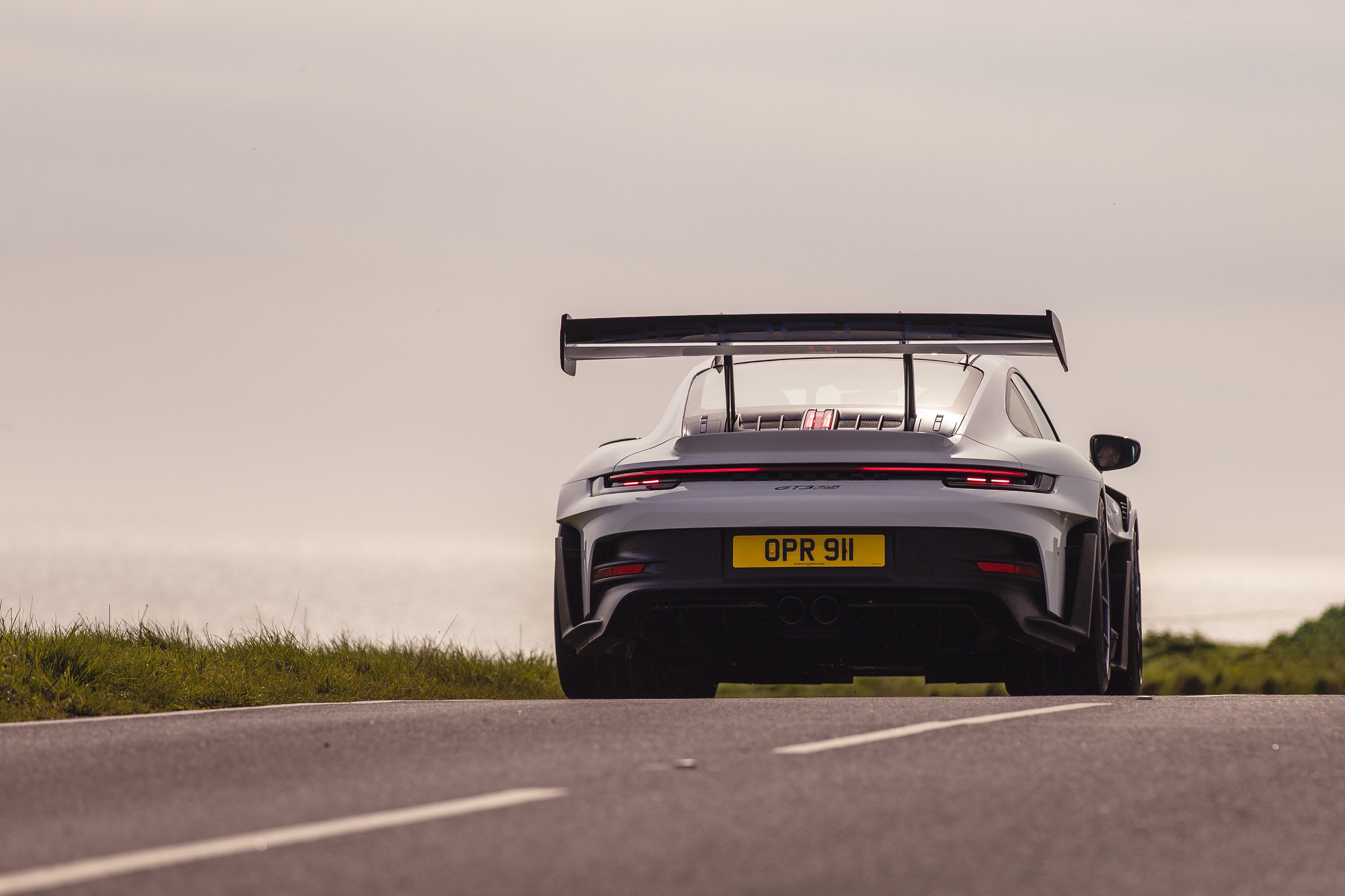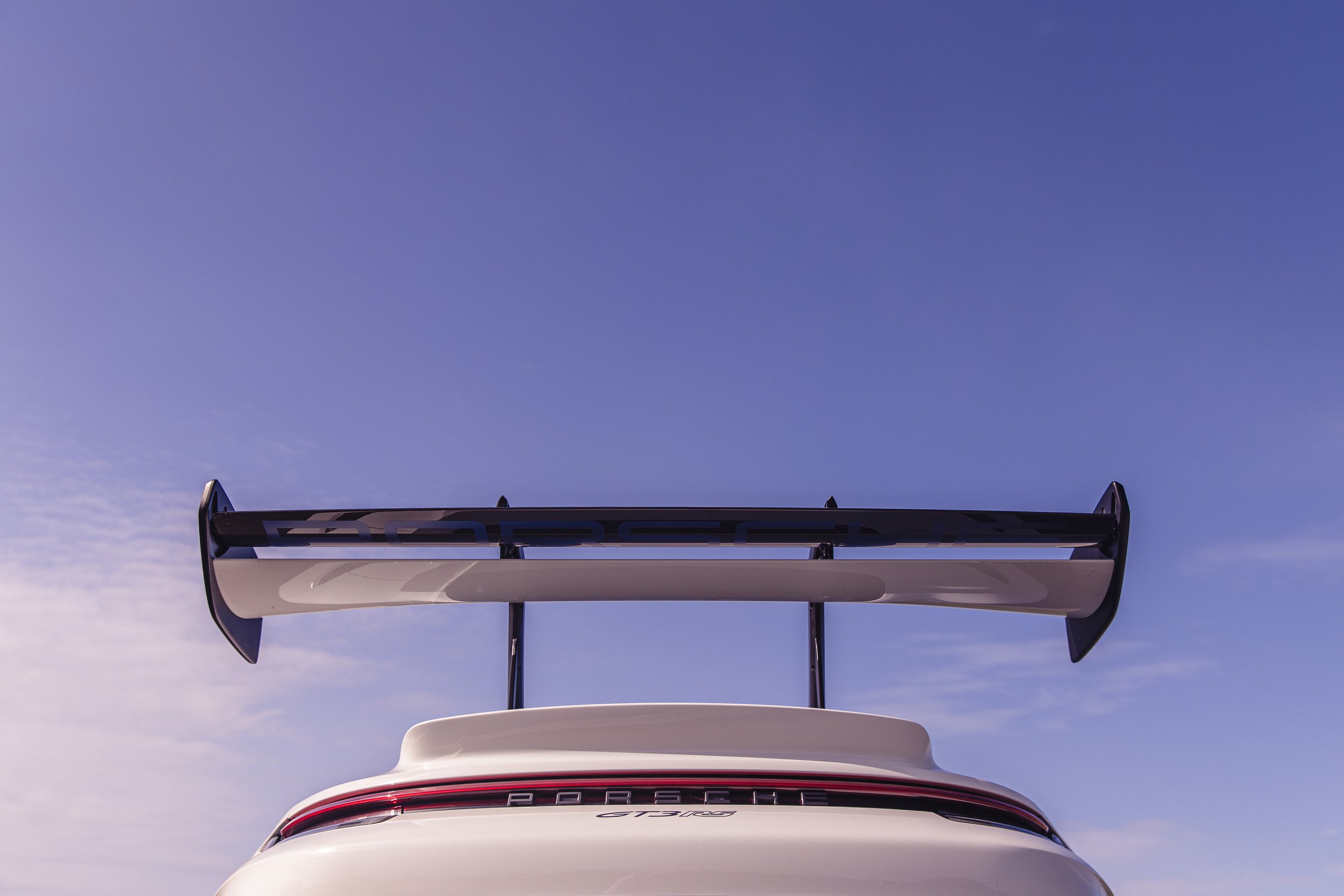
Road Test: Porsche 911 (992) GT3 RS
Steve Sutcliffe attended the on-track launch of the 992 GT3 RS, but now he gets to grips with it on UK roads.
WORDS: Steve Sutcliffe | PHOTOS: Dom Ginn
So however mind-bogglingly fast and exciting you think the new 992 GT3 RS might be like to drive, just pause for a moment, then have a really good look at that wing and those enormous rear tyres, squeezed somehow into a pair of bulging rear wheel arches, and try to imagine what it might feel and sound like at 9000rpm in third gear. Screaming across a fast empty road at sunrise on a quiet Tuesday morning. Then close your eyes again, double it and add an extra dollop of cream on top. Just to be sure.
So long as your deserted road has a half decent surface on it and a mixture of bends both slow and sweeping – much like the ones you see in these pictures – the driving experience this car offers is so sharp, and so responsive to whatever inputs you might make at any of its controls, you climb out of it after a while wondering (kind of knowing actually) whether any car, of any type or price, will ever surpass what it can do. Or make you feel more alive than this one does as it barks and weaves and howls its way across the landscape. And the answer is, probably not.
From its outrageous aerodynamic grip to its rabid, sometimes physically uncomfortable performance, the 992 RS is a line-in-the sand kind of car. A once in a lifetime moment the like of which, you suspect, we may never see again from Porsche. It is the last of the Weissach crazy gang for sure and what a note, if that really is the case, to go out on.
Before we get down to the really juicy stuff, here are some numbers with which to whet your appetite, although mere numbers are not what this car is all about: 518bhp at 8500rpm with a rev cut at 9000rpm; 342lb ft at 6300rpm; a compression ratio of 13.3:1 (this is a road engine for heaven’s sake); a kerb-weight of just 1450kg; 0-62mph in a whisker over 3sec; top speed, well that’s actually been reduced a touch compared with the regular GT3 because Porsche’s GT department wanted to shorten the overall gearing to give the RS more punch where it counts, hence a number of ‘just’ 184mph – which the RS hits in seventh gear, its 4.0-litre flat six rotating at an ear-splitting 8750rpm.
In every sense, the latest GT3 RS is that rarest of cars: the real deal. Yet despite being propelled by one of the all-time great flat six engines, one that’s mated to a motorsport-developed PDK gearbox that’s breath-taking in both its speed and precision when shifting gears, it is defined not by its powertrain but, instead, by its aerodynamics.
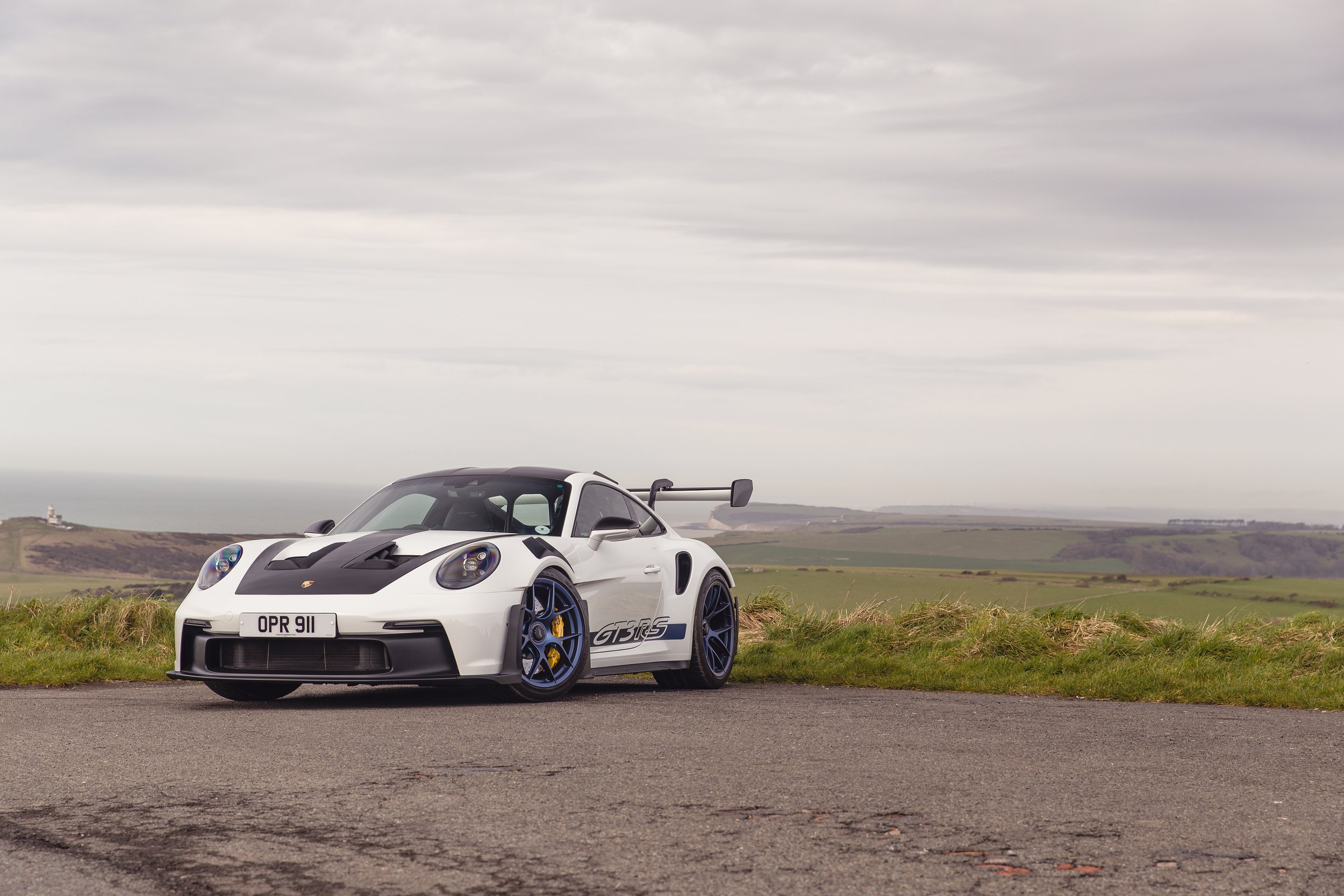
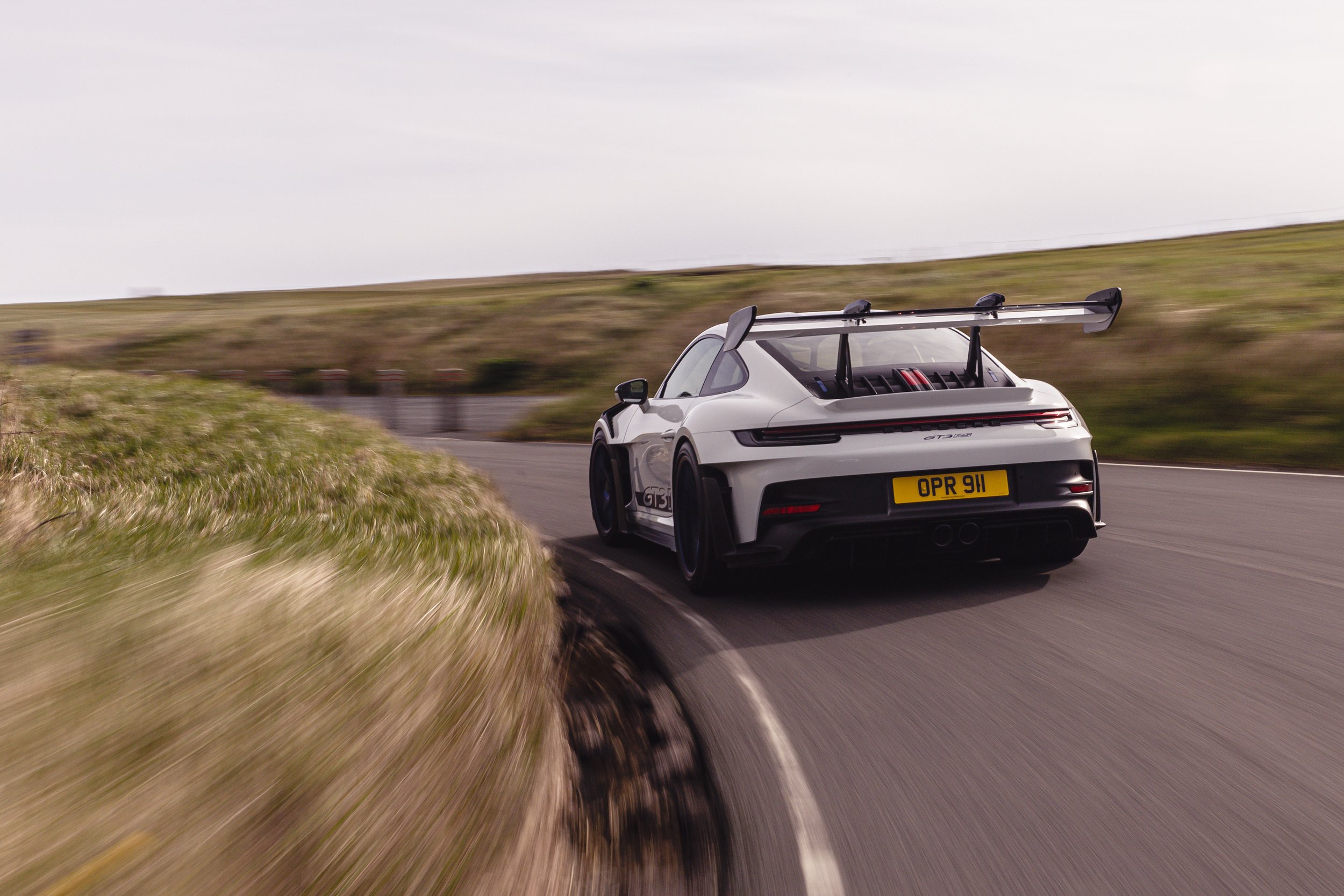
How so? Because at its top speed of 184mph the RS produces a quite staggering 860kg of downforce when its electronically adjustable rear wing is fully deployed. It also uses a huge new single radiator in its nose that occupies what would normally be the entire luggage area, mainly to accommodate two new underbody flaps without which its almighty aerodynamic grip would simply never arrive.
So, although its 4.0-litre flat six engine has new cams and generates a touch more power than a regular GT3’s to give it an even sharper punch at the top end, the RS unleashes its biggest moves courtesy of the amount of grip it generates. And via the extra speed it can carry though corners – so not necessarily down the straights that sit between them.
It’s a bold and typically interesting philosophy that Porsche has embraced in this instance – eschewing the pursuit of pure horsepower to find other ways of making the RS faster and more exciting to drive. But to be honest, Weissach’s engineers had few other options available to them beyond turbocharging, and they were never to go down that route with the RS.
Truth is, European emissions regs have become so strict of late, Porsche knew it couldn’t squeeze many more beans out of the 4.0-litre flat six engine; in the event they conjured another 14bhp out of it. So instead, they had to give it more grip to make it faster, hence they went to town with the aero and gave it slightly wider Cup 2 tyres, although Goodyears were fitted to the car you see here because they work better across a broader range of temperatures than the Michelins, in other words more of the year round in the UK. They’ve also exacted a number of chassis upgrades over the GT3 to achieve the required dynamic improvements.
Some range of upgrades it is, too. On a steering wheel that contains no less than seven new buttons, you can individually adjust the settings for the bump and rebound characteristics of the dampers through eight different stages. You can also adjust the pre-load and on-power settings for the diff (the car is rear wheel drive inevitably, but also has four wheel-steering, not-so inevitably). Via another menu setting but using the same buttons, you can also alter the level of intervention from the traction and stability control systems plus the shift speeds of the gearbox. And that’s before you go anywhere near the button marked DRS, which allows you to alter the angle of that vast rear wing to increase or drop the downforce through any given corner.
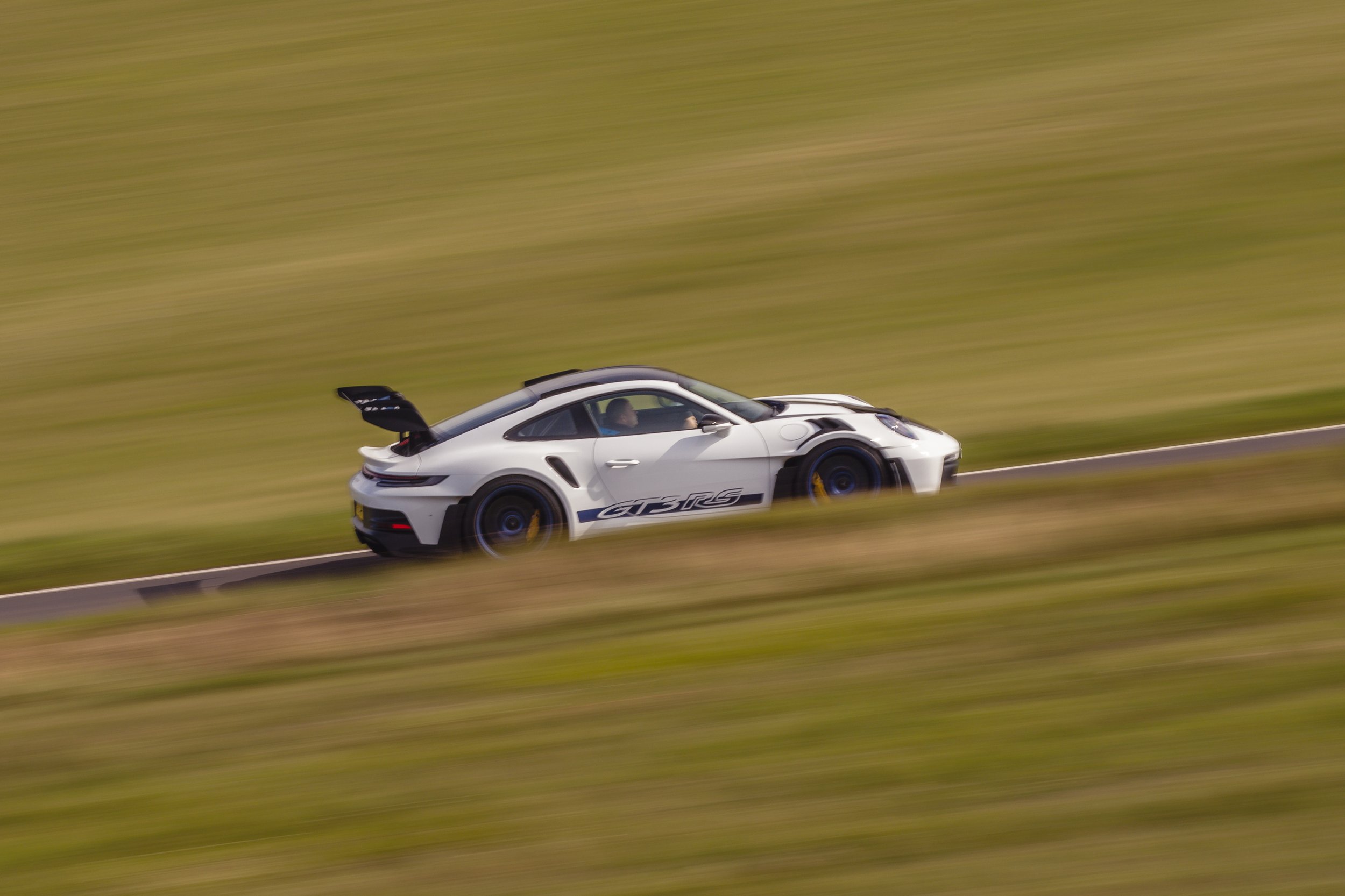

As in the regular GT3, there are three different drive modes to choose from; normal, sport and track. But only in track mode do you get full use of all the toys. In normal mode, which is the start-up default mode, you can’t adjust the dampers or diff, which means you can’t leave a GT3 RS set-up like a track monster for someone else to climb in and get bitten by. Everything defaults to a nice predictable factory setting every time you turn it off, in other words, which is nice.
Yet if it all seems like way too much to get your head around, don’t fret, because in practice the RS is nowhere near as bamboozling to drive as you might think. Nor is it anywhere near as uncompromising as you’d expect given the size of its wings and tyres. Purely in terms of ride refinement it’s actually quite a lot better (or less severe) than the GT3 on which it’s based, thanks mainly to those trick dampers.
To begin with, in fact, it feels, sounds, steers, changes gear, and basically drives quite a lot like the GT3, but with a deeper sophistication to its ride refinement and a little bit more madness from the engine beyond 7000rpm. The immediate sensations are each familiar, even it feels like a slightly bigger car from behind the wheel because the bodyshell is based on that of the 911 Turbo, not the regular 992 Carrera, with most of the new body panels being made from carbon composites to help keep the kerb weight down to 1450kg.
But then like all the truly great driver’s cars, the RS keeps things back from you to begin with. It goads you into thinking that anyone with a bit of front could climb aboard and drive it pretty quickly, right from the word go. And to an extent that’s probably true, they could, one can – because it’s that quick, even at six tenths.
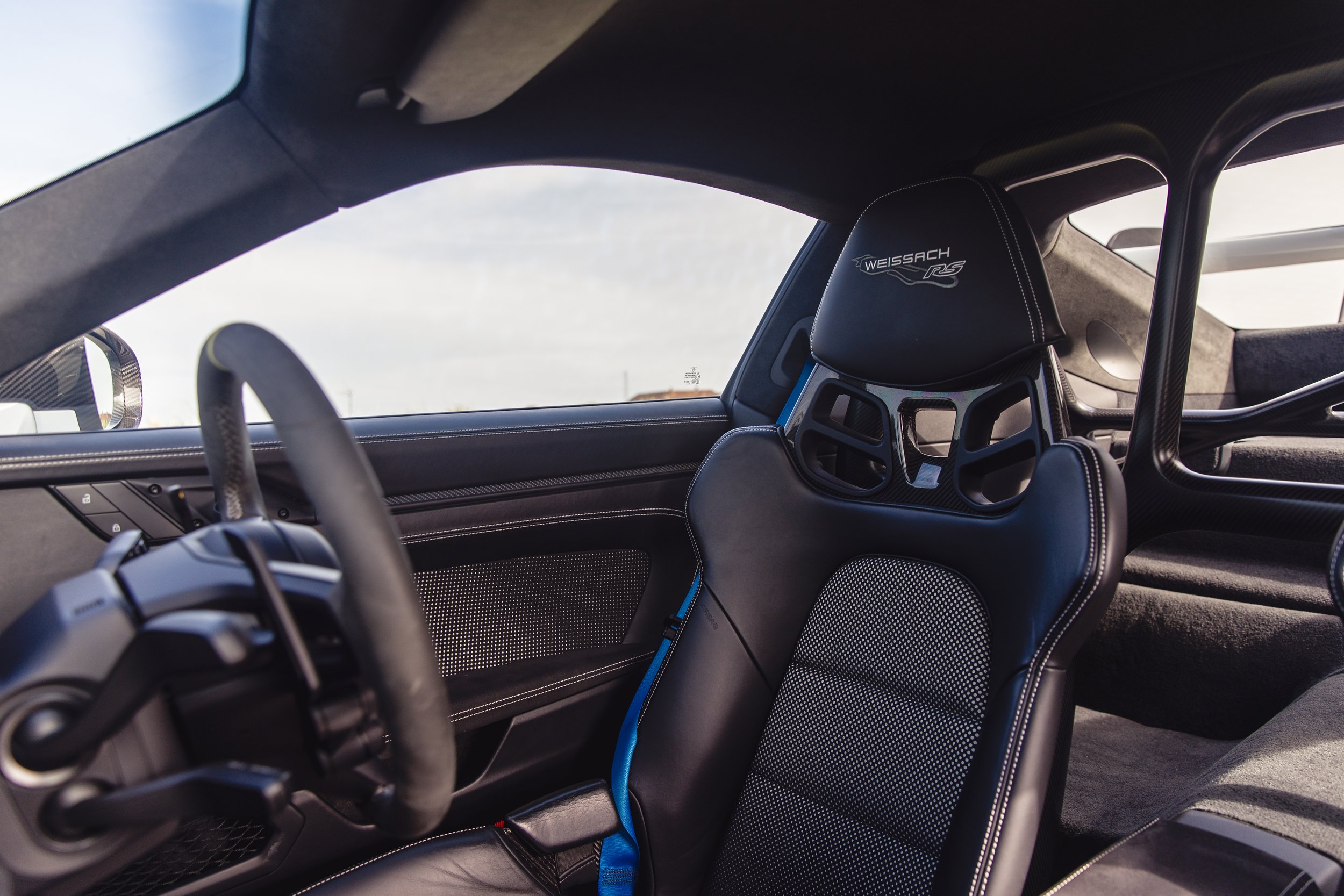
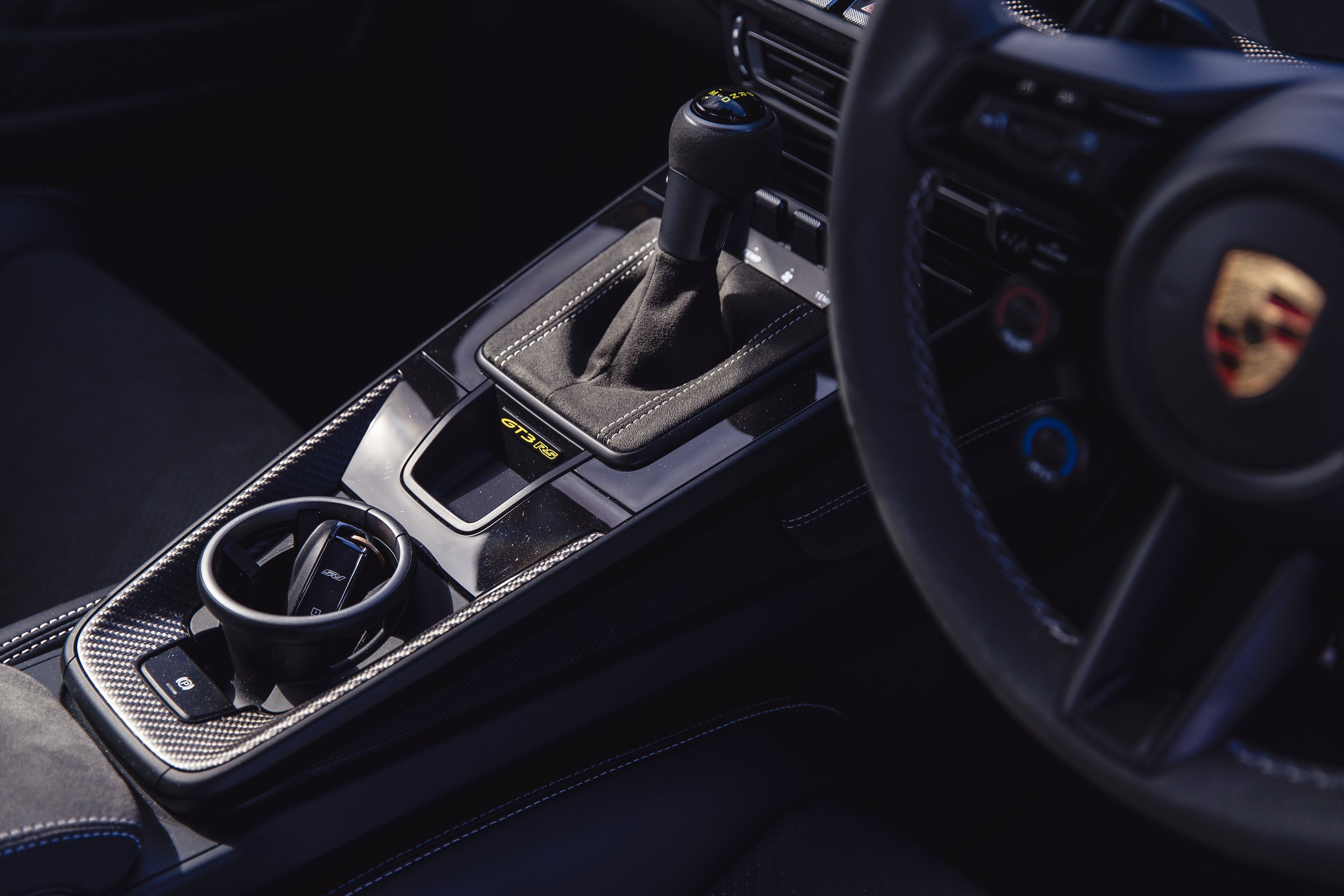
But to get the best out of it, to go quicker in it and find out what lies beneath its new carbon composite skin, you need to delve a little deeper into its vast box of secrets. You need to play with the toys a fair bit because if you don’t, the magic within will lie mostly untapped.
It’s not an especially easy car to unlock, and it shouldn’t be, but when you do finally get a glimpse of what it is truly capable of – start finding out how extreme its abilities are, and how much speed it can carry into and through corners – the realisation is pretty magnificent.
Inevitably you climb out of it knowing there’s always more to come. Always. But knowing, too, that you can also save what’s left until next time. Or the time after that. I’m honestly not sure you’d ever climb out of a 992 RS and think; I’m done here, I’ve reached the end of the game, this thing has no more secrets to give.
On every journey you learn something new about it, and about yourself. Driving it on the public road is as much an exercise in self-restraint as it is about trying to go anywhere near its limits, but even at 45mph the 992 RS is a fascinating, intriguing car merely to be in; to listen to, and to interact with. And on the rare occasions on which you do decide to push it harder, you’ll soon realise there is nothing else quite like it. Anywhere. At any price. The driving experience it provides is that complex. That memorable.
Such restrained wizardry makes the new GT3 RS a very special car indeed. The last, yes, and very probably the best there’s ever been, and Porsche has made some pretty good ones down the years.
Technical Specifications
Engine: Flat-six, naturally aspirated
Displacement: 3,996cc
Power: 518bhp @ 8,500rpm
Torque: 343lb ft @ 6,300rpm
Transmission: 7-speed PDK, RWD
0-62mph: 3.2 secs
VMAX: 184mph
Kerbweight: 1,450kg
Price: £192,600+
Arguably the best GT3 RS there’s ever been. It looks extreme and it is, but it’s still usable on the road and you’ll never get bored of learning how to get the best from it.
9/10
Verdict & Rating
“I’m honestly not sure you’d ever climb out of a 992 RS and think; I’m done here, I’ve reached the end game”
